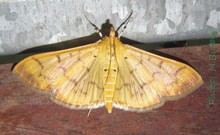
Taiwan, officially the Republic of China (ROC), is a country in East Asia. Neighbouring countries include the People's Republic of China (PRC) to the northwest, Japan to the northeast, and the Philippines to the south. The main island of Taiwan has an area of 35,808 square kilometres (13,826 sq mi), with mountain ranges dominating the eastern two-thirds and plains in the western third, where its highly urbanised population is concentrated. The capital is Taipei, which, along with New Taipei and Keelung, forms the largest metropolitan area of Taiwan. Other major cities include Kaohsiung, Taichung, Tainan and Taoyuan. With 23.57 million inhabitants, Taiwan is among the most densely populated countries.
The controversy regarding the political status of Taiwan, sometimes referred to as the Taiwan Issue or Taiwan Strait Issue or, from a Taiwanese perspective, as the mainland Issue, is a result of the Chinese Civil War and the subsequent split of China into the two present-day self-governing entities of the People's Republic of China and the Republic of China.

Hornbeams are hardwood trees in the flowering plant genus Carpinus in the birch family Betulaceae. The 30–40 species occur across much of the temperate regions of the Northern Hemisphere.

A privet is a flowering plant in the genus Ligustrum. The genus contains about 50 species of erect, deciduous or evergreen shrubs, sometimes forming small or medium-sized trees, native to Europe, north Africa, Asia, many introduced and naturalised in Australasia, where only one species extends as a native into Queensland. Some species have become widely naturalized or invasive where introduced. Privet was originally the name for the European semi-evergreen shrub Ligustrum vulgare, and later also for the more reliably evergreen Ligustrum ovalifolium and its hybrid Ligustrum × ibolium used extensively for privacy hedging, though now the name is applied to all members of the genus. The generic name was applied by Pliny the Elder to L. vulgare. It is often suggested that the name privet is related to private, but the OED states that there is no evidence to support this.

Yonaguni is a town located entirely on Yonaguni Island in Yaeyama District, Okinawa Prefecture, Japan. It is the westernmost municipality in Japan, and is known for billfish fishing and as a diving spot. In 1987, divers discovered the Yonaguni Monument, a rock formation that some believe may be man-made.
Taiwanese people may be generally considered the people of Taiwan who share a common culture, ancestry, and speak Taiwanese Mandarin, Hokkien, Hakka, or indigenous Taiwanese languages as a mother tongue.

East Asia is the eastern region of Asia, which is defined in both geographical and ethno-cultural terms. The modern states of East Asia include China, Japan, Mongolia, North Korea, South Korea, and Taiwan. China, North Korea, South Korea and Taiwan are all unrecognized by at least one other East Asian state due to severe ongoing political tensions in the region, specifically the division of Korea and the political status of Taiwan. Hong Kong and Macau, two small coastal quasi-dependent territories located in the south of China, are officially highly autonomous but are under de jure Chinese sovereignty. Siberia borders East Asia's north, Southeast Asia the south, South Asia the southwest and Central Asia the west. To the east is the Pacific Ocean and to the southeast is Micronesia.

Rehimena surusalis is a species of moth of the family Crambidae described by Francis Walker in 1859. It is known from Australia, China, the Andaman Islands, Sri Lanka, Indonesia, Taiwan, Korea and Japan.

Hodebertia is a genus of micro-moth of the family Crambidae. It contains only one species, Hodebertia testalis, and is found in the tropics, but ranges north to parts of Europe on occasion.

Calliteara lunulata is a moth of the family Erebidae. It is found in the Russian Far East, Japan, China and Taiwan.
Dioryctria pryeri, the splendid knot-horn moth, is a species of snout moth in the genus Dioryctria. It was described by Ragonot in 1893, and is known from Japan, Taiwan and China.
Dipha is a monotypic snout moth genus described by N. Arakaki and Yutaka Yoshiyasu in 1988. Its single species, Dipha aphidivora, was described by Edward Meyrick in 1934. It is found in India, China, Malaysia, the Philippines, Taiwan, Java and Japan.
Lamida is a genus of snout moths. It was described by Francis Walker in 1859.
Lamida mediobarbalis is a species of snout moth in the genus Lamida. It is known from India.
Lamida moncusalis, the cashew shoot and blossom webber, is a species of snout moth in the genus Lamida. It was described by Francis Walker in 1859. It is found in India.

Glycythyma chrysorycta is a moth in the family Crambidae. It was described by Edward Meyrick in 1884. It is found in India, Sri Lanka, Myanmar, Japan, Korea, China, Taiwan and Australia, where it has been recorded from Queensland.
Mecyna quinquigera is a moth in the family Crambidae. It was described by Frederic Moore in 1888. It is found in China, Japan and Taiwan.

Patania balteata is a moth of the family Crambidae. It was described by Johan Christian Fabricius in 1798. It is found across southern Europe, Africa and Asia, including Japan, Korea, Réunion, Madagascar, Taiwan, Thailand, Turkey and Ukraine, as well as New South Wales and Queensland in Australia. There is also an old record from Hawaii.

Patania inferior is a moth of the family Crambidae. It was described by George Hampson in 1899. It is found in Siberia, Japan, Taiwan, and Indonesia.

Patania punctimarginalis is a species of moth of the family Crambidae. It was described by George Hampson in 1896. It is found in Asia, including India, Indonesia, Japan and Taiwan.












